In early April 1941, Germany invaded Greece.
German losses on Crete were exceptionally high, with about 6,700 total casualties.
About 4,500 of those casualties were among the paratroopers and glider-borne troops.
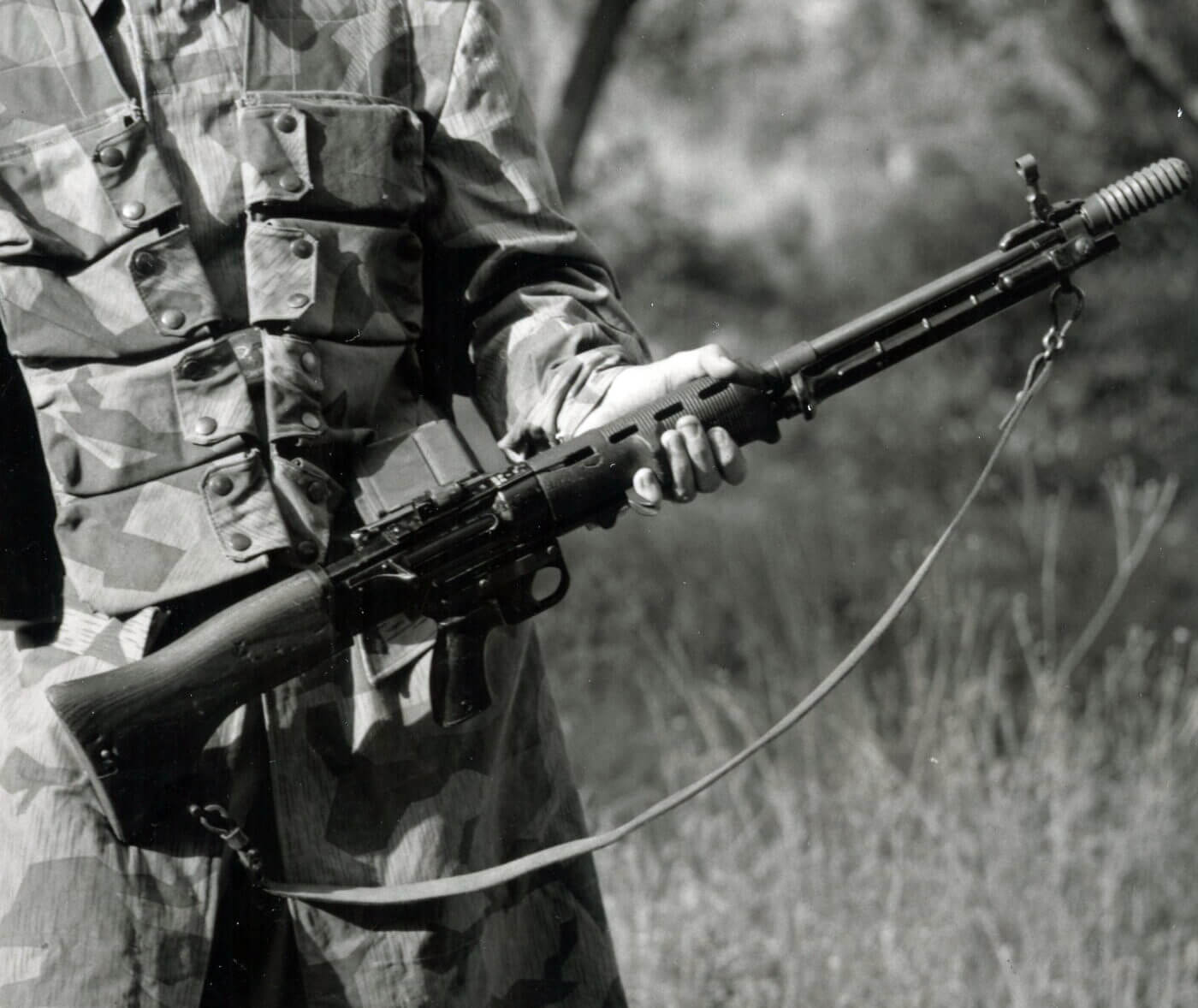
The FG42 with a standard 20-round magazine and magazine bandolier. Image: Author’s collection
German procedure called for low-altitude jumps, and this meant that individual weapons were not carried by the paratroopers.
Separate weapons cannisters carried Mauser rifles,MG 34 machine guns,MP40 submachine gunsand the related ammunition.
This additional firepower did not make much of a difference.
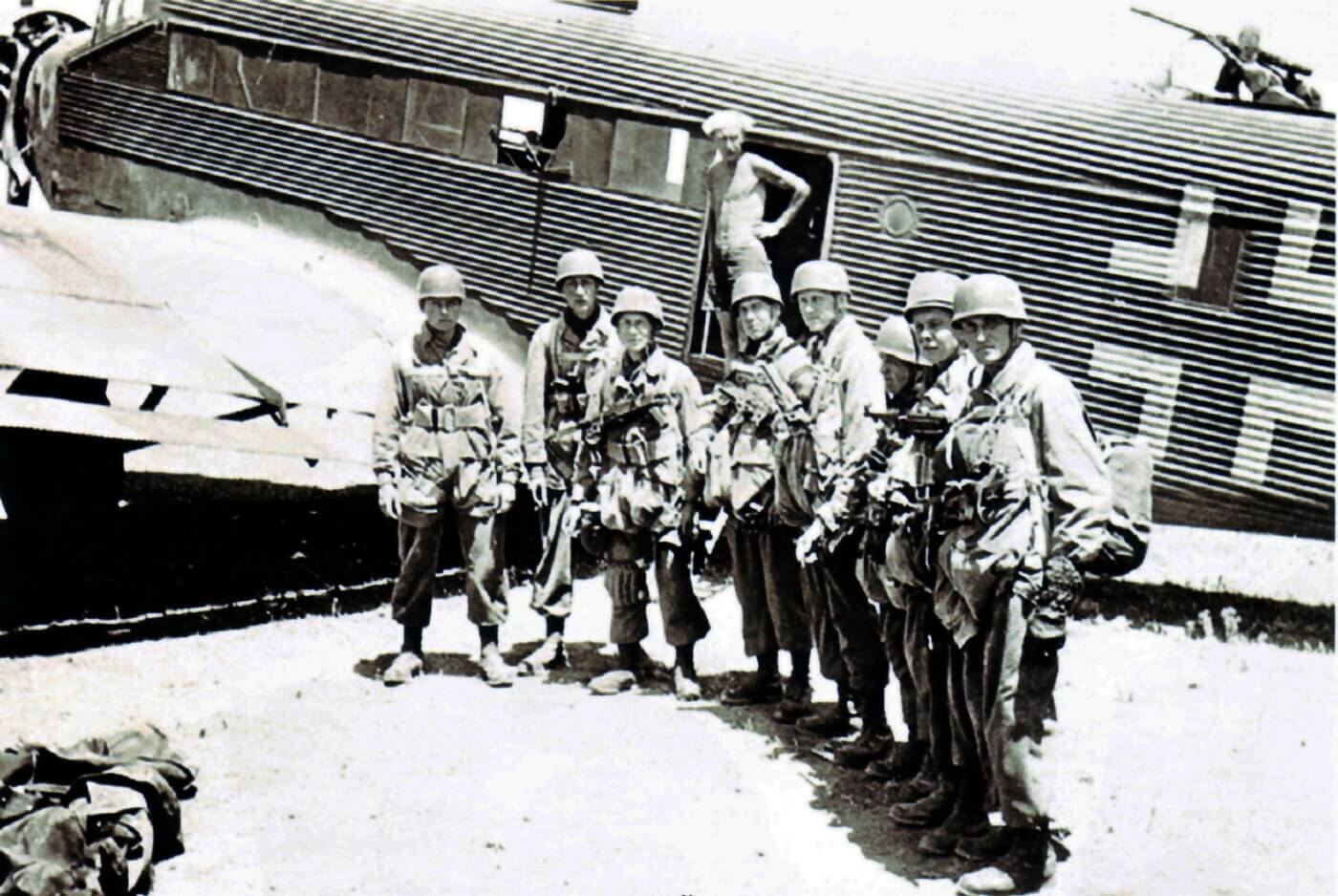
German paratroops ready to board theirJu52 transportbefore the Crete operation in 1941. Image: Author’s collection
Since the paratroopers struggled to secure the landing zones, the following troops in gliders also suffered heavy casualties.
The element of surprise was lost, and the casualties piled up.
Many of the men in the early drops were shot before they could reach their weapons cannisters.
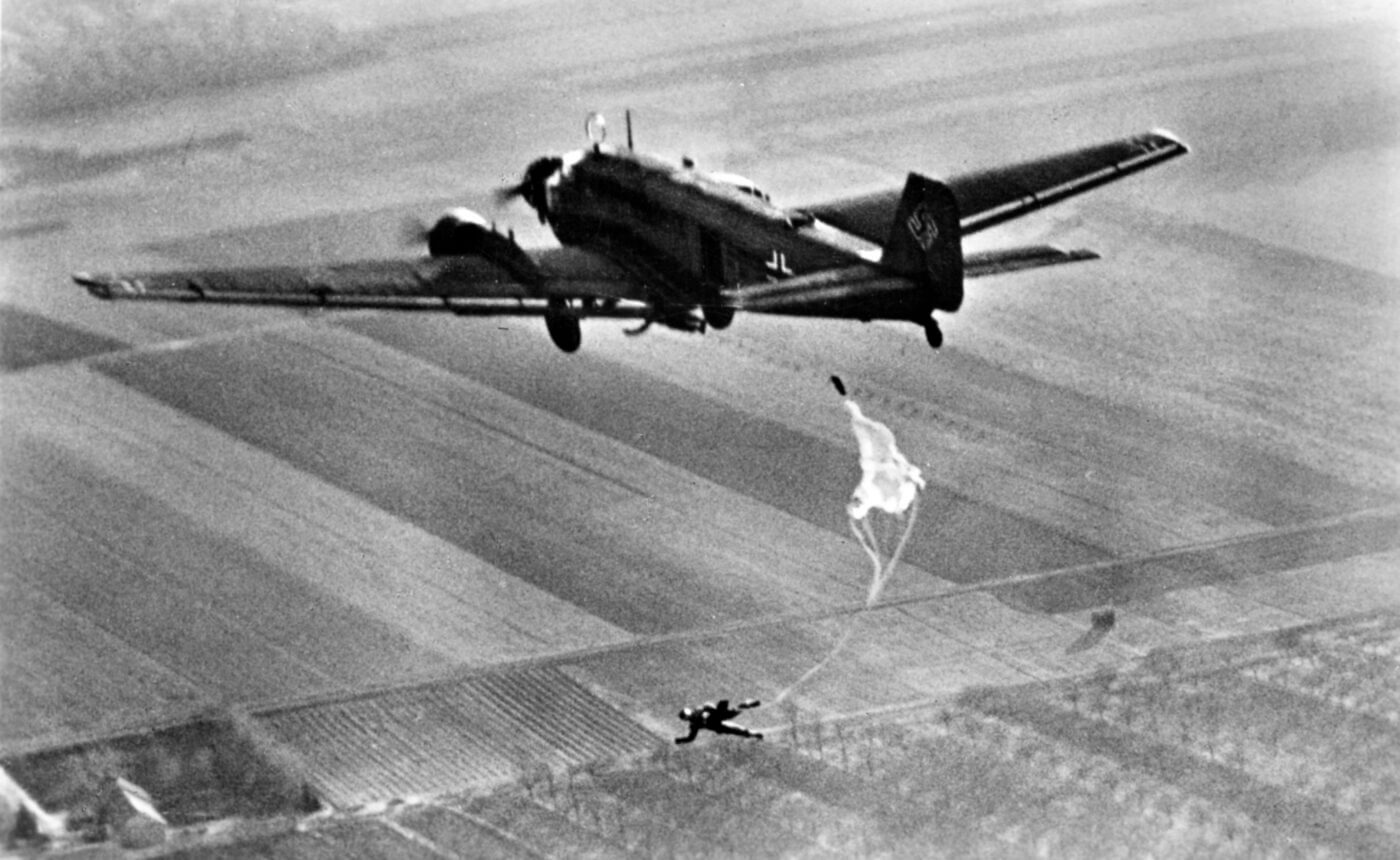
German paratroops normally jumped from relatively low altitude and most of the weapons were dropped in a separate canisters. Image: Author’s collection
A program begun in 1940, was rapidly accelerated by the summer of 1941.
Even so, everyone in Nazi Germany had to go through Adolf Hitler for approval.
Behind the scenes, Luftwaffe Reichsmarschall Hermann Goring kept the Fallschirmjagergewehr project alive.
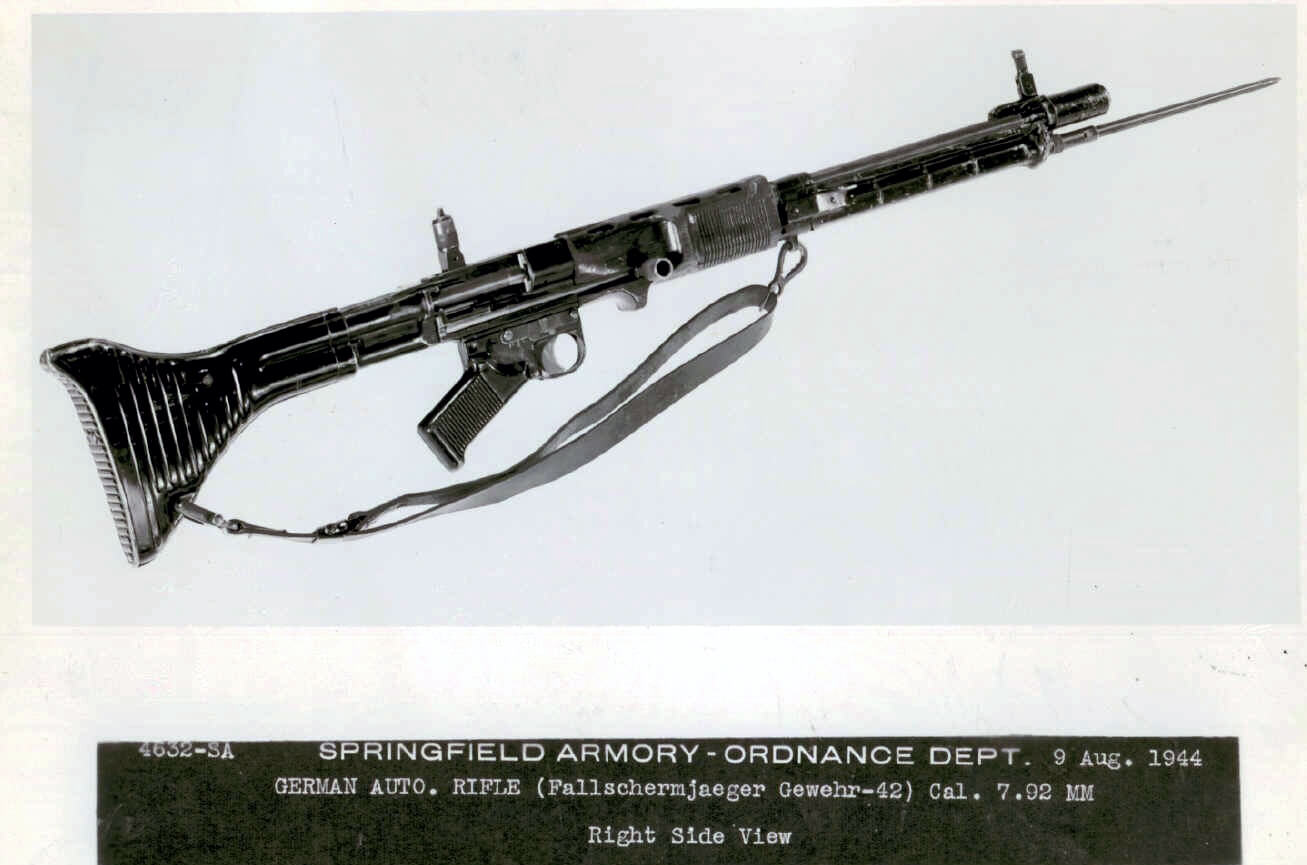
An early example of the FG42 brought to the U.S. for testing during the summer of 1944. Image: NARA
By mid-December 1941, specifications had been issued to the German armaments industry.
The FG42 underwent continuous development as ever-changingLuftwafferequirements resulted in a wide range of variants.
Even so, the Special Forces Foreign Weapons Handbook from 1967 offers a full section on operating the weapon.
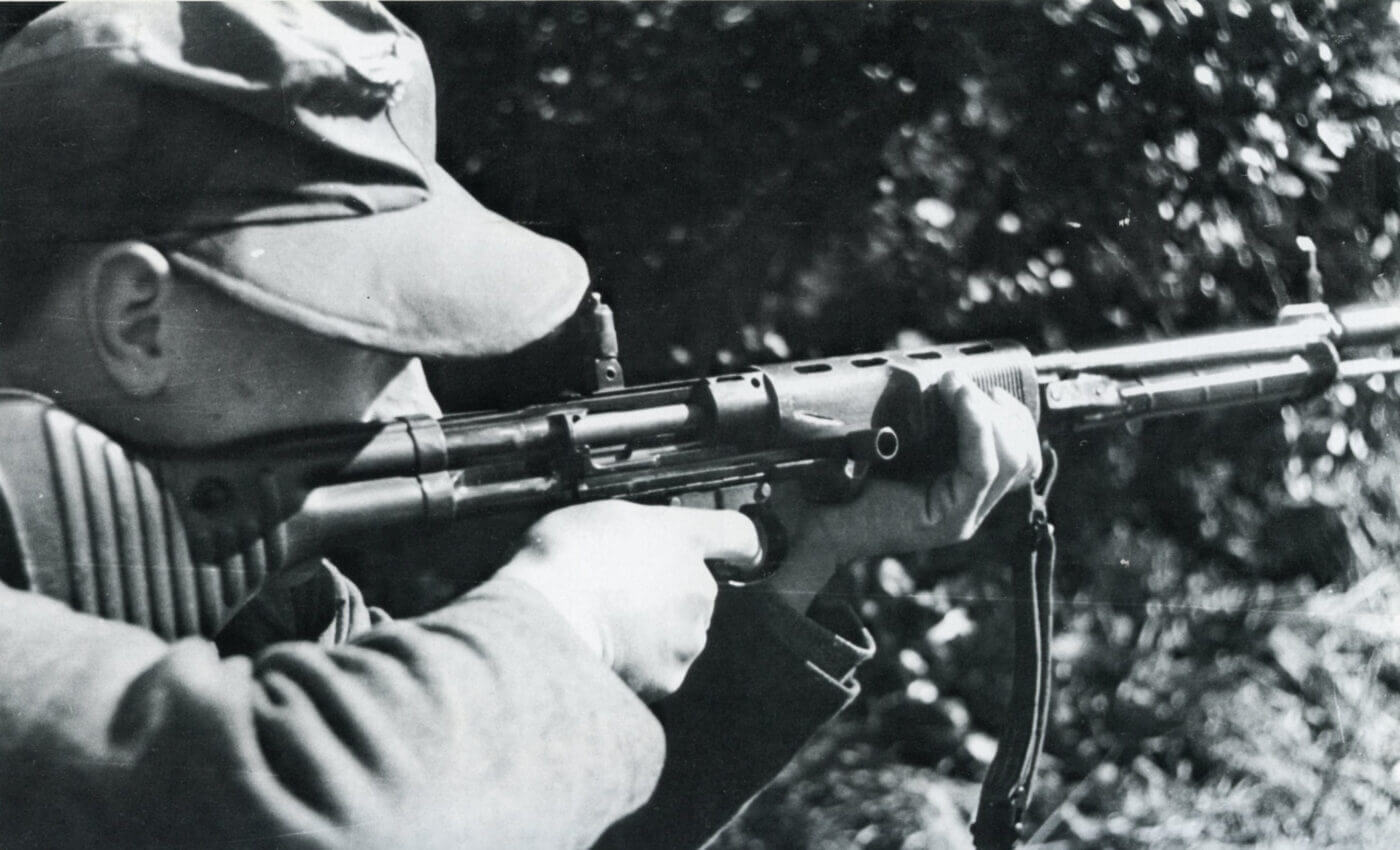
The FG42 in use in Normandy during the summer of 1944. Image: General Patton Memorial Museum (GPMM)
Shooting the FG42
The FG42 packed a lot of power and features into a single rifle.
The biggest issue with any selective-fire rifle using a full-sized cartridge comes during automatic fire.
Some reports claim that the side-mounted magazine creates an unbalanced weapon.
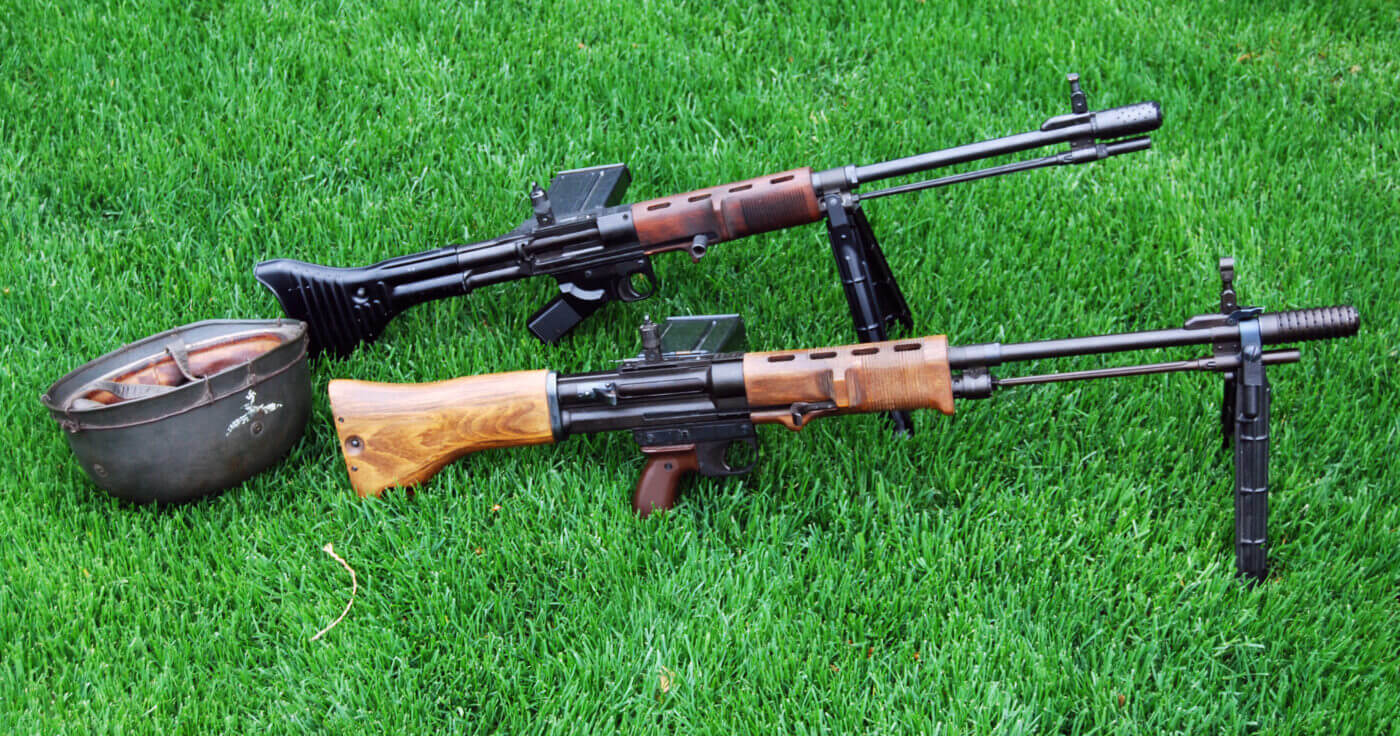
Replicas of the Type I-pattern (top) and Type II-pattern FG42s made by the Japanese company Shoei. For many collectors, this is as close to the real deal as they may ever get. Image: Peter Suciu
On the other hand, the side-mounted magazine allows a low profile during prone shooting.
I did a little informal research with some FG42 shooters.
Everyone I spoke to thought well of the rifle.
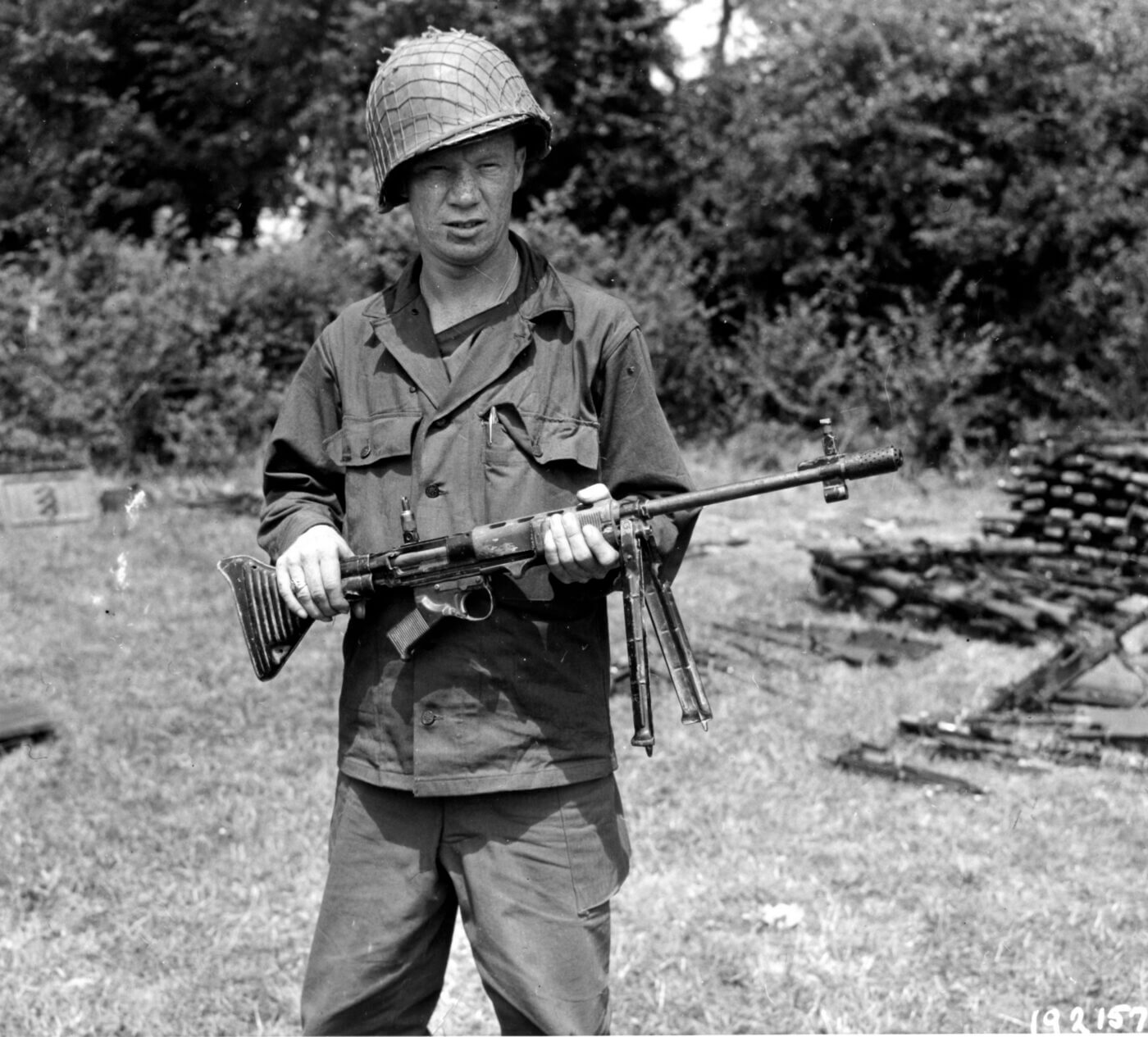
A U.S. soldier holds a FG42 captured near St. Lo in July 1944. The spike bayonet is missing in this photo. Image: NARA
Some found it a bit uncomfortable to shoot.
Others praised its controllability when fired from the shoulder or the bipod.
Most agreed that the muzzle flash was intense in low-light situations.
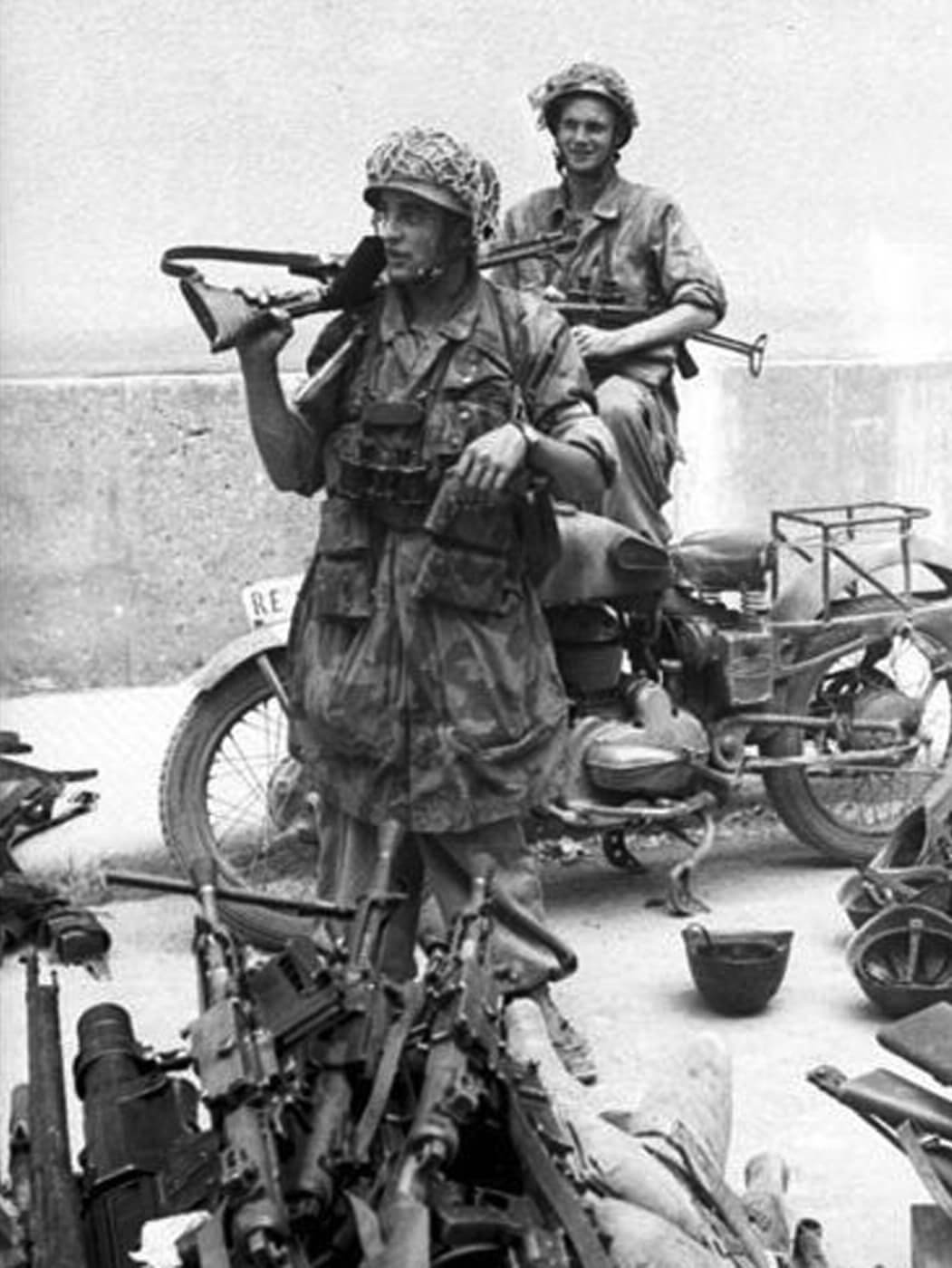
German paratrooper armed with a FG42 during Operation Achse, the German army’s move to disarm Italian units after the Italian Armistice. Image: GPMM
The FG42 in Combat
The FG42s first combat mission ended without a shot fired.
The Italian government had imprisoned Benito Mussolini in a mountain-top resort on the Gran Sasso.
Several of the paratroopers on this mission were photographed carrying the FG42.
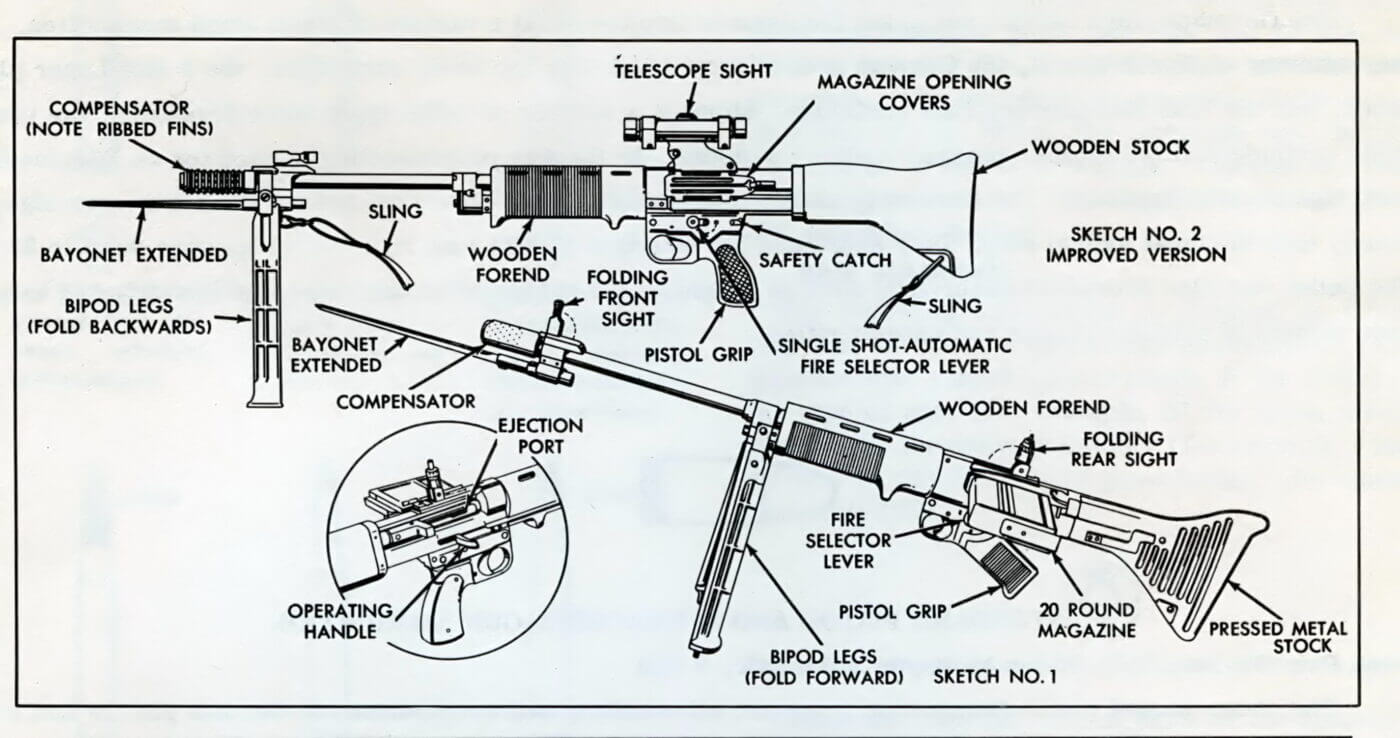
U.S. Ordnance illustration of the FG42, with the Type I pattern at the bottom and a Type II pattern at the top. Image: NARA




